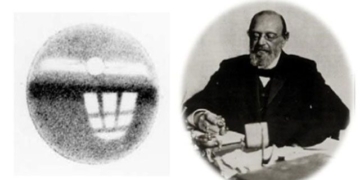The idea of digital screens that can roll up and fit into a backpack like a printed newspaper has been around for three decades, and finally, they are making their debut.
Some of the world’s leading newspapers are planning to introduce a form of “electronic print,” allowing users to download entire content from the web and read it on reflective digital screens (which they claim are more eye-friendly than the backlit LCD screens of laptops or smartphones).
Skeptics and Risk-Takers
 |
| Source: Reuters |
The first complete “handheld newspapers” are expected to “arrive” at the beginning of next year. However, they are unlikely to work wonders for the print industry overnight.
Nevertheless, this does not deter print newsrooms from experimenting with electronic print in the battle for readers and advertising revenue against electronic competitors. At least, Hearst Corp. from the United States, Les Echos in Paris, and the Belgian financial magazine De Tijd are preparing to conduct large-scale trials this year.
Many are skeptical about the future of “electronic print,” given that previous efforts by publishers to sell e-books have completely failed due to high prices and a lack of rich downloadable content.
However, the new generation of screens from Sony and iRex has made a strong impression on media corporations with their sharp resolution and energy-saving capabilities, prompting them to “take another risk.”
Promising Prospects
It’s easy to understand why newsrooms are so enthusiastic about this idea. Digital print, or electronic print, leverages the advantages of two of today’s most popular media trends: the rapid growth of online advertising and the rise of handheld devices like the iPod.
Almost every prominent print newspaper today runs its own website, but few readers pull out their laptops to read the news while waiting for a train or dare to read them in… the restroom.
However, this situation could be completely reversed with electronic print. Moreover, it allows newsrooms to cut costs by up to 75% by eliminating distribution fees. Many optimists view this as a “lifeline,” but in reality, no one dares to confidently predict the demand for electronic paper.
“Compared to the number of people listening to music on the go, the number of users reading newspapers on the road is much smaller,” warns analyst Ross Rubin of the NPD Group.
Hopes for the Screens
Both Sony and iRex devices utilize E Ink screen technology, which employs tiny capsules to display either white or black depending on the electric current applied. These screens are thin and portable enough to be printed on flexible, ultra-thin plastic sheets, making them easy to roll and fold.
Xerox and HP are both developing technologies to mass-produce rollable screens at low costs. Analysts hope that production costs will soon drop to the point where newspapers can… give away these devices to readers, as long as they subscribe to annual newspaper purchases.
Currently, Sony’s e-readers are priced between $300 and $400. “As soon as this price becomes cheaper than the cost of an annual subscription, this idea will truly become a reality,” says Kenneth Bronfin, president of Hearst Interactive Media. Twelve newspapers under the Hearst Corporation will conduct trials of electronic print at the end of this year.
In Europe, Ifra is also discussing experiments with 21 newspapers from 13 countries, including The New York Times.
Tian Yi




















































